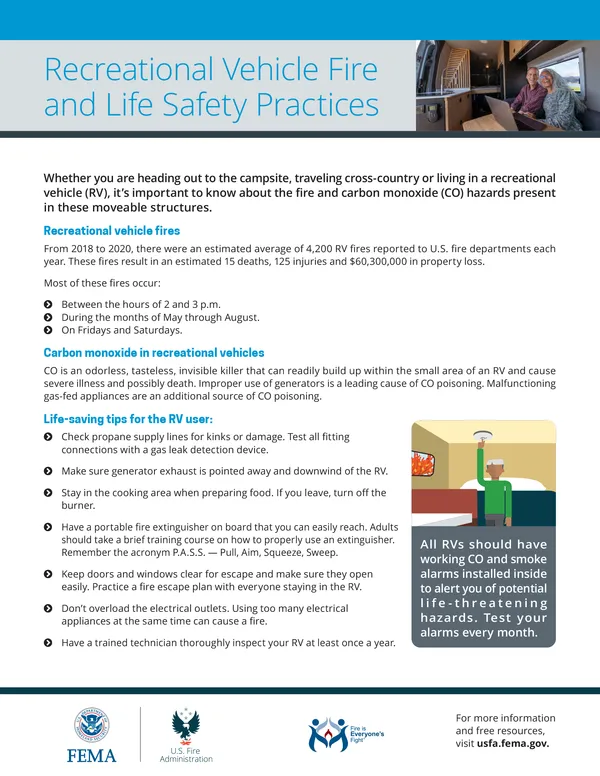Recreational vehicle (RV) owners need to be aware of the fire and carbon monoxide (CO) hazards present in these movable structures.
Did you know:
From 2018 to 2020, there was an estimated average of 4,200 RV fires reported to U.S. fire departments each year. These fires resulted in an estimated 15 deaths, 125 injuries and $60,300,000 in property loss.
Source: Data Snapshot: Recreational Vehicle Fires (2018‑2020)
Share these messages with your community about steps they can take to lower their risk of fire and CO poisoning related to RVs.
Messages to share
Click to copy message.
Check propane supply lines for kinks or damage. Test all fitting connections with a gas leak detection device.
Have a portable fire extinguisher on board that you can easily reach. Adults should take a brief training course on how to properly use an extinguisher. Remember the acronym P.A.S.S. — Pull, Aim, Squeeze, Sweep.
Keep doors and windows clear for escape and make sure they open easily. Practice a fire escape plan with everyone staying in the RV.

